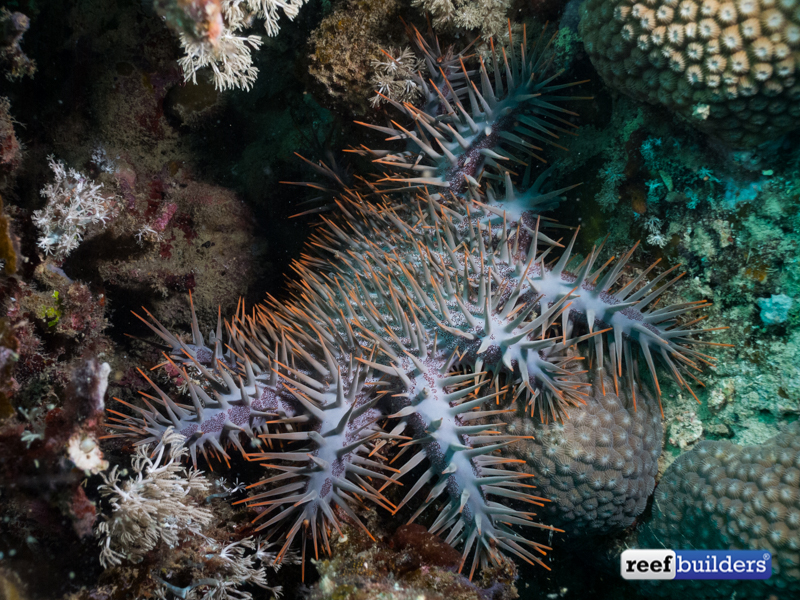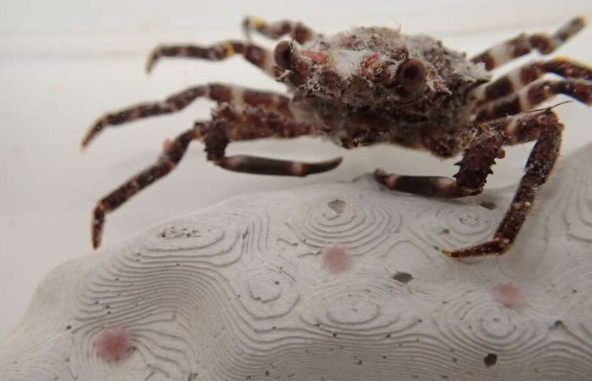Scientists at the University of Queensland have identified the Red Decorator Crab, Schizophrys aspera, as the most consistent predator of Crown of Thorns Starfish, consuming them in 89% of trials. Crown of Thorns Starfish (COTS,) are one of the largest starfish in the world, preying on coral tissue and decimating coral on the Great Barrier Reef over the last 40 years.
Ph.D. candidate Amelia Desbiens from the University of Queensland’s School of Biological Sciences set about finding an animal that would prey on them, testing more than 100 species of crabs, shrimps, worms, snails, and small fish. Of those, the Decorator crab came out by far the best, devouring more than five juvenile COTS per day, while other species in the trial barely ate one. She and her colleagues have published the research in the Journal Coral Reefs.
“The red decorator crab—or Schizophrys aspera—was by far the most consistent predator consuming COTS in 89% of the feeding trials,” Ms. Desbiens said on phys.org. “It’s one of the best predators of COTS we’ve seen and could be a natural buffer against future outbreaks on the reef.
“We also saw 10 other species of crabs eat juvenile COTS fairly consistently, while other animals, including the short-tailed latirus sea snail and the iridescent fireworm, were less enthusiastic eaters.”

Venomous spines
Few predators successfully prey on COTS when the starfish are adult, as they are protected by venomous spines. But they are vulnerable when juvenile, and hide in the coral rubble. This is when predators such as the decorator crabs could be most effective, and it may also explain why some areas of reefs aren’t attacked in such numbers by adults. COTS are prolific breeders so the researchers found the best time to try to control them was when they were young and defenseless. Knowing this has given them a chance of controlling them.
Senior author, Dr. Kenny Wolfe said research into the role the red decorator crab plays in helping to protect coral reefs would continue.
“We’d like to conduct broader surveys on the Great Barrier Reef across areas with and without outbreaks to evaluate whether the presence of this crab can help predict the chance of COTS gaining a foothold,” Dr. Wolfe said.
“This preliminary study sets us on the right path to resolving the role naturally existing predators could play in controlling COTS outbreaks.”
The Red decorator crab is native to the tropical Indo-Pacific and Australia. It reaches a maximum size of 6cm and can be found at depths up to 40 meters. Find out more about the paper here. DOI: 10.1007/s00338-023-02364-w



